
When we think of the past, one of the first thoughts that runs through our mind is how people lived without electricity. Nowadays, we can’t even imagine a day without it because all of our appliances and devices run on electricity.
The truth is, however, that most homes don’t have enough power outlets to keep everything running and charged, so most of us rely on power strips without being aware that appliances that consume a lot of energy become dangerous fire hazards when we plug them into a power strip.
Although power strips are the thing to go to when it comes to charging your phone or power an entertainment setup, there are certain devices that should never be plugged into a power strip.
Air conditioners, space heaters, toasters, and other appliances that use high wattage can easily cause power strips to overheat, which can easily lead to a fire hazard.
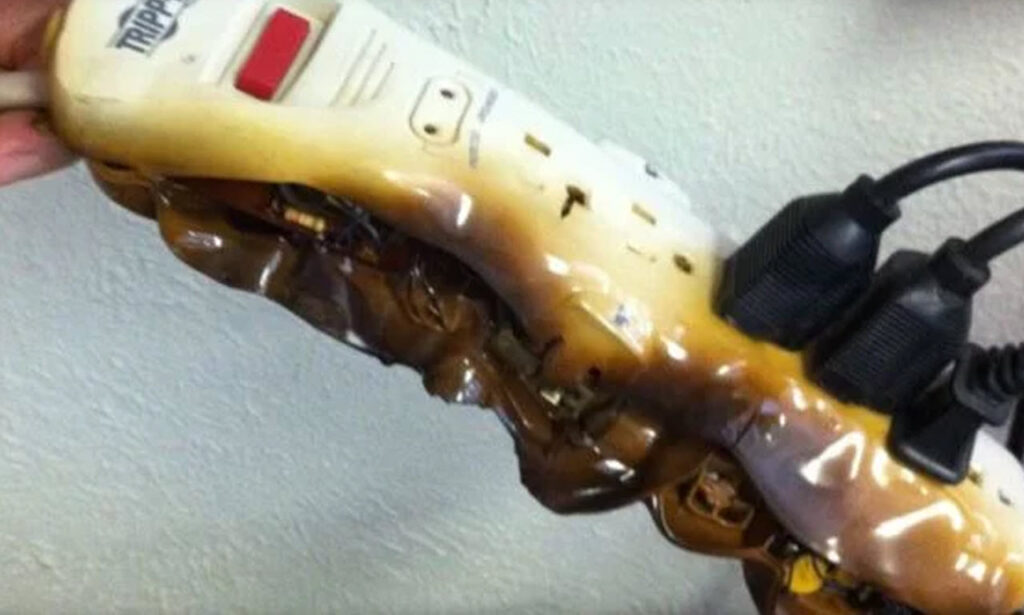
Even before plugging anything into a power strip consider the ammount of power they support. This is usually listed on the product itself.
High-capacity appliances need to draw a lot of power through an electrical circuit to work. Keep in mind that an appliance does not need to be large in size to draw large amounts of power.
Below is the list of appliances that should never be plugged into a power strip.
1. The oven: Even though the oven is not used continually, it is a power-hungry appliance that should not be plugged into a power strip. In fact, it should be plugged into its own wall outlet on its own circuit.
2. Refrigerator: Refrigerators require a lot of power and frequently cycle on and off which can easily overload a power strip and cause damage. Much like the oven, refrigerators require a wall outlet dedicated solely to powering the appliance.
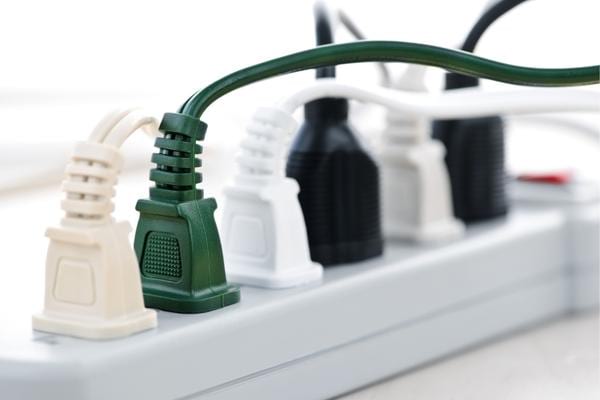
3. Washing Machine: When turned on, washing machines pull a lot of power. This is the main reason why these appliances shouldn’t share a receptacle with any other appliance or device.
Most washing machines use a max of up to 1400 watts, putting it dangerously close to the max load of most power strips. On top of that while working, washing machines are usually left unattended and work longer hours, at least an hour, which is long enough for a power strip to overheat.
4. Heating: Portable heaters should never be plugged into a power strip because most of them use 1,500 watts of energy on their high setting and they usually run for extended periods of time.
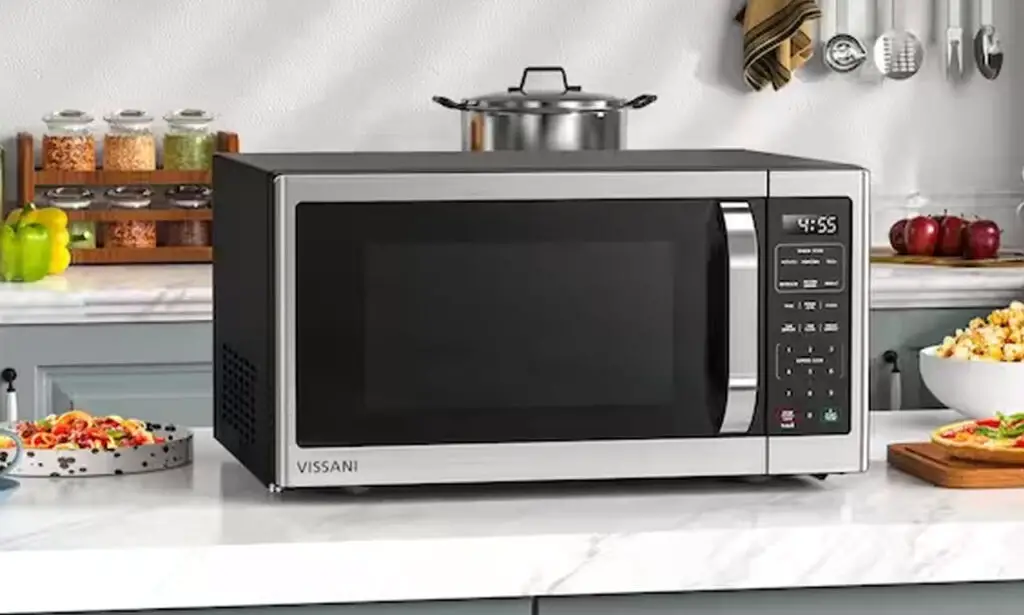
5. Microwave: Since they consume a lot of energy when used, most microwave ovens are plugged into their own receptacle and that is always a good practice.
6. Coffee Maker: Those who own a coffee maker are not fully aware of the power these appliances use, and this is why they should never be plugged into any sort of power strip or extension cord.
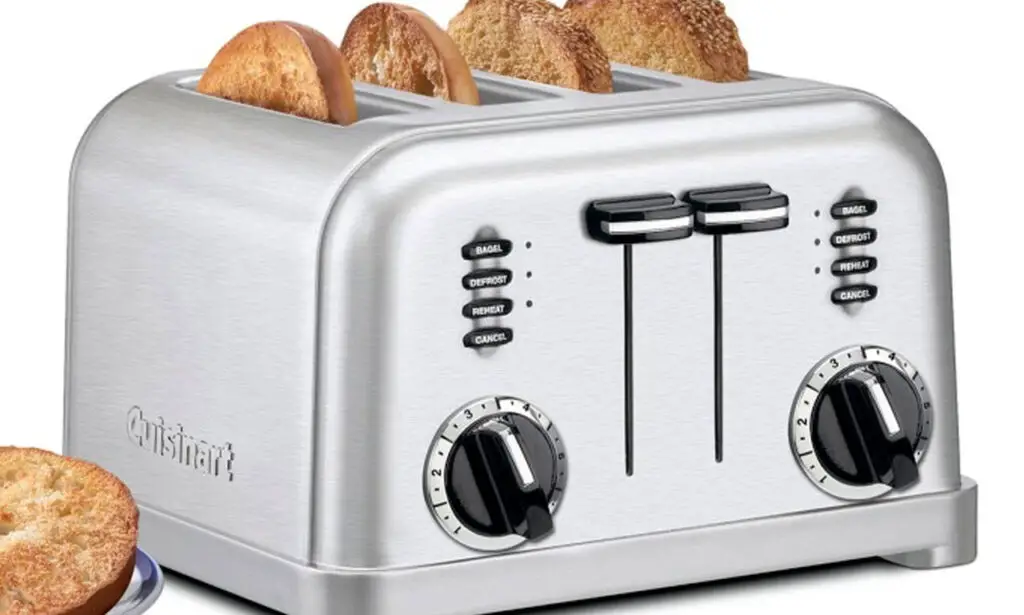
7. Toaster: You may think that browning up slices of bread or bagels doesn’t require a lot of energy, but the truth is that toasters use a lot of energy when in use and they should be plugged directly into the receptacle rather than a power strip.
8. Another Power Strip: Power strips are not meant to be used in conjunction with another power strip, although many people do exactly that. This, however, violates most safety codes because it can easily lead to overloading the electrical system.
9. Electronics (Computer, TV, Router): These types of electronic devices don’t necessarily use a lot of power on their own, but they are sensitive to surges and you can find yourself with a burnt out computer or TV very quickly if you plug them into a power strip.
If you want to protect these sensitive devices from power surges, opt for a power strip that functions as a surge protector.
My wife started to distance herself from my daughter and me. One day, she left an envelope and disappeared

When my wife started pulling away from me and our daughter, I couldn’t understand why. My heartbreaking story is about how someone can love you so much that they try to protect you by all means. Read on to see how we traversed secrets, innocent lies, and heartache to unite as a family.
There’s something deeply unsettling about not knowing the whole story, especially when it involves the people you love the most. Okay, let me backtrack a bit, my name is Kevin, and Levine and I have been married for 15 lovely years.
We share one amazing child, Emily, who is still quite young and attending school. My wife and daughter mean the world to me, and I believe we have a great family. However, around six months ago, Levine started withdrawing and avoiding me and our daughter.
For months, I watched as my formerly loving and caring wife grew increasingly distant by the day. What started as small changes in her demeanor escalated into full-blown avoidance. Her smiles are fewer and her nights spent awake longer.
I even sometimes caught glimpses of her crying in the bathroom more than once. But every time I approached her about it, she brushed off my concerns with a shaky “I’m fine.” Yet, she wasn’t. And deep down, I knew it.
This unspoken “thing” hung over me and our daughter heavily, causing our family relationships to start cracking.
“Levine, please talk to me,” I pleaded one evening, finding her again at the window, staring into the backyard. Her back was to me, her shoulders tense.
“I just need some air, Kevin. That’s all,” she murmured, her voice hardly above a whisper.
I stepped closer, my concern deepening. “It’s been months of ‘just needing air.’ You’re scaring me, baby. You’re scaring Emily.”
She turned then, her eyes wet with unshed tears. “I can’t, not yet…” her voice trailed off as she turned back to the window, leaving me standing helplessly behind her.
I returned home yesterday from picking Emily up at school to find the house eerily silent. The morning Levine left was like any other, except she didn’t say goodbye. My stay-at-home wife wasn’t anywhere when we arrived.
However, on the kitchen table amidst the usual clutter of mail and Emily’s school books that she had come with, I found THIS DREADFUL ENVELOPE. My name scrawled across it in Levine’s familiar handwriting.
My heart sank to my stomach as I tore it open with trembling hands. Inside, her letter lay, written in the same shaky hand that had addressed the envelope. As I opened it, tears streamed down my face as I found out what she had been going through all along:
“My dearest husband,
If you’re reading this, then I am already gone. I couldn’t bear to tell you in person, for fear I would never be able to leave. I have been diagnosed with stage 3 cancer, and the doctors are not hopeful. It is my deepest fear to become a burden to you and our beautiful Emily.
I want to protect you both from the pain of watching me deteriorate. I love you both more than life itself, and it’s because I love you that I need to do this. Please understand that this is the hardest choice I’ve ever made, but it’s made out of love. I am at Clear Life Center, a quiet hospice two states away. Please forgive me.
With all my love, always,
Levine.”
Tears blurred my vision as I tried to compose myself. My lovely, beautiful wife had chosen solitude over the anguish she believed her illness would cause us. If I thought I loved her before, at that moment I realized I loved her MORE THAN EVER.
Without a second thought, I packed a bag. I told Emily, “My baby, mommy’s not feeling too well, and we are going on a little trip to see her, okay?” My brave little girl with a worried face asked, “Is she going to be okay, Daddy?”
Not wanting to lie to her, I replied, “She’s going to feel much better when she sees us, I promise.” We drove straight to the facility my wife mentioned, desperate to be with her, regardless of her wishes to shield us.
When we arrived and I found her, the reality of her condition hit hard. Levine was frail, a shadow of the vibrant woman I had fallen in love with. Yet, when she saw us, her eyes lit up with a mix of joy and sorrow, and she instantly looked better, than I had envisioned!
“Kevin, Emily,” she murmured, reaching out weakly.
“Mom, why didn’t you tell us? We could have helped…” Emily sobbed, clutching her mother’s hand. “I thought… I thought it would be easier this way,” Levine whispered, tears streaming down her face.
“We needed to be here, with you. No matter what,” I said, gripping her hand.
We spent those last weeks of her illness by her side, achieving her life goals before her death. Whenever she was strong enough, we went out for walks, well, she was in a wheelchair. She got to tell Emily all the things she wished her to know before her passing.
“I’ll always love you, my sweet baby girl. And I want you to know that I will be with you in spirit for all the days of your life,” Levine told Emily as they embraced, shedding more tears.
We talked, laughed, and sometimes sat in silence, savoring the precious moments we had left. Emily read her favorite books aloud, and I held her mother’s hand every night until she fell asleep.
My darling wife passed away holding my hand. Emily curled up beside her, a peaceful expression on her face. Her last days were not filled with the pain and suffering she had feared but with love and the warmth of her family.
In the wake of her passing, I’ve come to realize the profound strength it took for her to make the decision she did. Levine’s act, initially so incomprehensible to me, was one of selfless love. The kind that sees beyond immediate pain to the eventual peace it can bring to those left behind.
Now, as Emily and I adjust to a world without Levine, we do so with a deep understanding of her last gift to us. Not just the envelope that explained her absence, but the enduring presence of her love.
A love that, like the subtle fragrance of her favorite flowers, lingers around us, invisible yet palpable. It remained a gentle reminder that even in their absence, love remains.


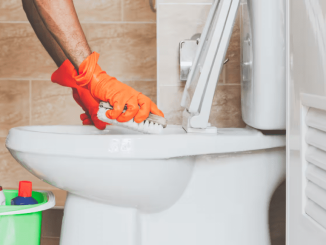
Leave a Reply